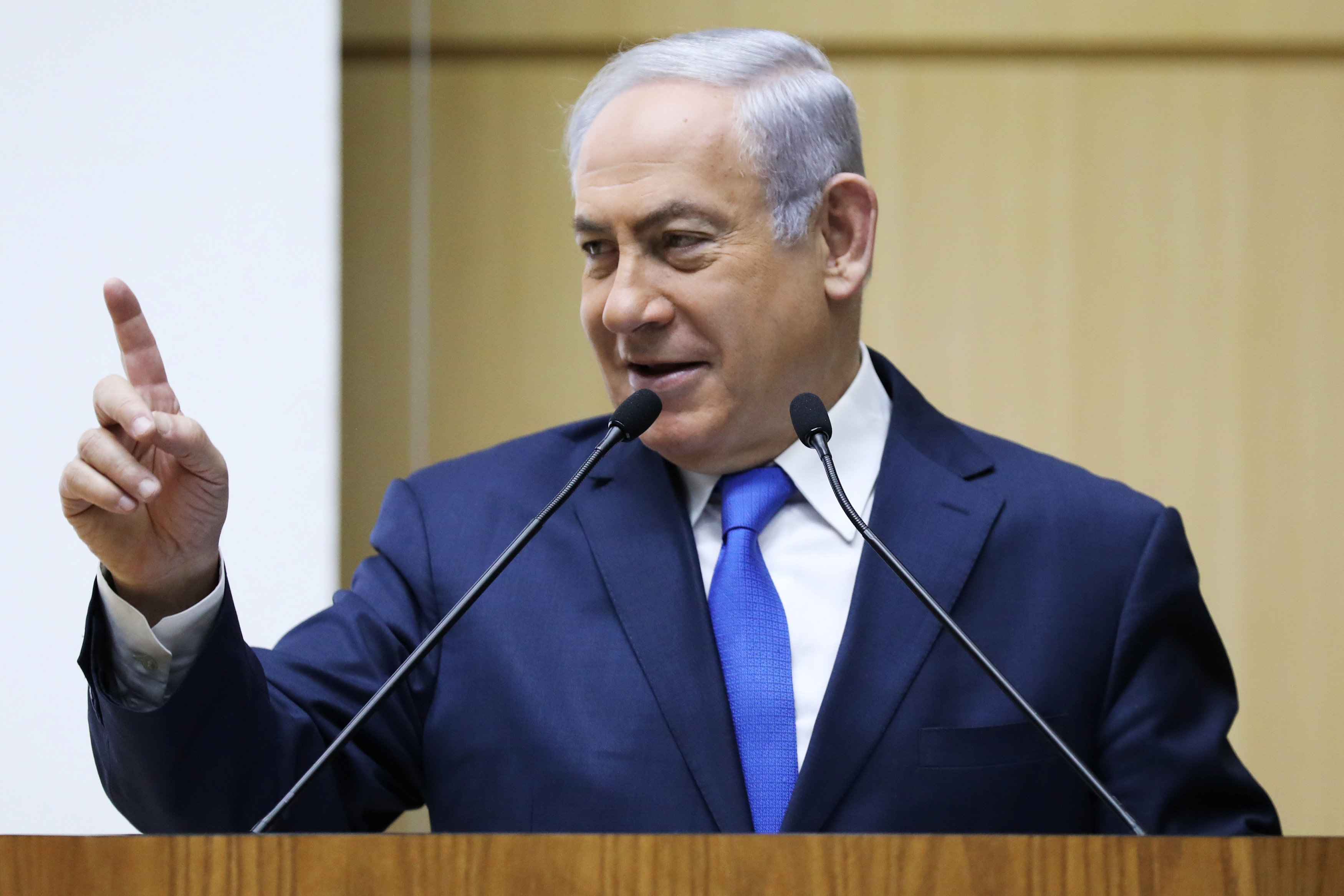 Israeli Prime Minister Benjamin Netanyahu gestures as he speaks during an event marking “The Appreciation for the Fallen of Israel’s Wars and Victims of Terrorism Day” at the Knesset, Israeli parliament, in Jerusalem December 12, 2017. REUTERS/Ammar Awad
Israeli Prime Minister Benjamin Netanyahu gestures as he speaks during an event marking “The Appreciation for the Fallen of Israel’s Wars and Victims of Terrorism Day” at the Knesset, Israeli parliament, in Jerusalem December 12, 2017. REUTERS/Ammar Awad We call this format a Timesaver Guide to Israel’s Coming Elections. This will be a usual feature on Rosner’s Domain until next Election Day, March 2, 2020. We hope to make it short, factual, devoid of election hype.
Bottom Line
Exactly two months to election day, and Netanyahu bets on delay tactics.
Main News
Immunity: The PM asked Knesset speaker Yuli Edelstein to be granted immunity from criminal prosecution and standing trial. This stops all legal proceedings against him until a decision is made, possibly (but not necessarily) only when the next Knesset is elected.
Left Unification: Labor leader Peretz seems more open to examine the option of a joint list with leftist Democratic Camp (to avoid elimination below the electoral threshold).
Right Unification: The National Union is looking at its options, Running alone (and probably failing), joining the Jewish Home and Otzma as a third wheel, or establishing a new list of few attractive candidates. The Zionist-religious right is highly fractured.
Developments to Watch
Campaigns Real campaigns did not really start. The public is tired so most of the resources are kept for the last minute.
Polls No campaigns, and very few polls. Media outlets also save the money for later days.
The Blocs and Their Meaning
For now, no bloc can form a coalition. If this is the outcome of the election, we are facing a prospect similar to the previous round: either one of the blocs fractured (for example, Haredi parties agree to join a Blue & White coalition), or a forth election becomes a real option.

Party to Watch
For parties hover just above, or just below the electoral threshold of 3.25%. Each of these parties, if it fails to reach the necessary number, can make or break the election. What you can see in the graph, is what happens if one or two or three or all four parties do not make it into the next Knesset. Exact calculations are not easy to make, but using the current polls we can portray a likely outcome in each of the possible cases.
The parties we look at are:
Labor (left bloc) with current average of just above 5 seats in the polls.
The Democratic Camp (left bloc), with an average of less than 4 seats.
The New Right (right bloc), with an average of 5.6 seats.
The United Right (right bloc), whose average is less than 3 seats (that is to say: most polls have it below the threshold).
How to read the graph: What we show here is the strength of the opposition to Netanyahu in all cases. So what we see here does not present a potential coalition without Likud, it only presents Netanyahu’s chances at forming a coalition. For example, if the two smaller parties do not cross the threshold (The Democratic Camp and the United Right), we expect the no-Netanyahu bloc to have 64 seats – meaning Netanyahu is unlikely to be able to form a coalition. The two columns we highlighted are the scenarios that bring Netanyahu close to having a coalition. These are scenarios in which one or two parties on the left do not cross the threshold, while the two parties on the right do. In such cases, the opposition will have 60 or less seats, and Netanyahu will have 60 or more.

——-
Shmuel Rosner’s book #IsraeliJudaism, Portrait of a Cultural Revolution (with Prof. Camil Fuchs) is available on Amazon.






















 More news and opinions than at a Shabbat dinner, right in your inbox.
More news and opinions than at a Shabbat dinner, right in your inbox.